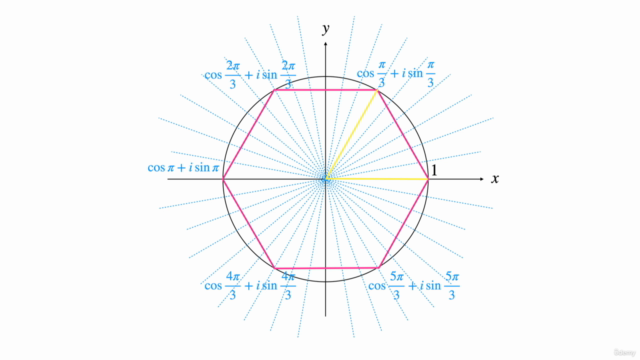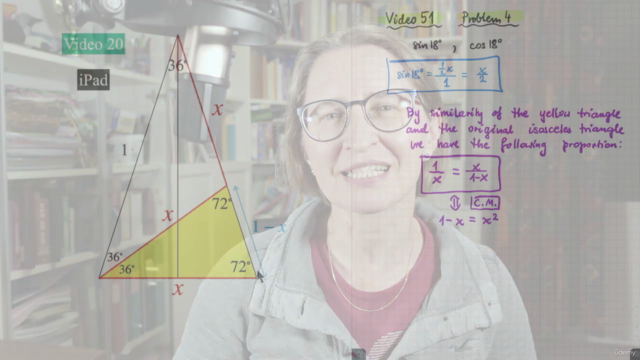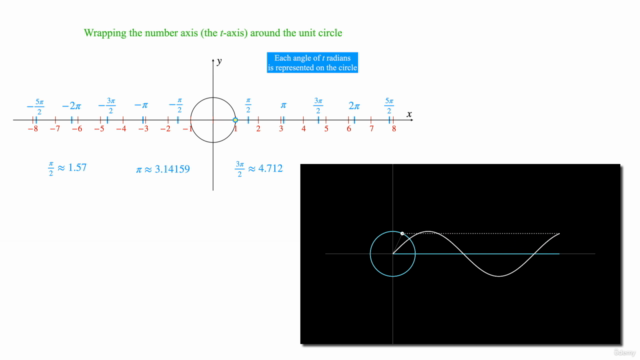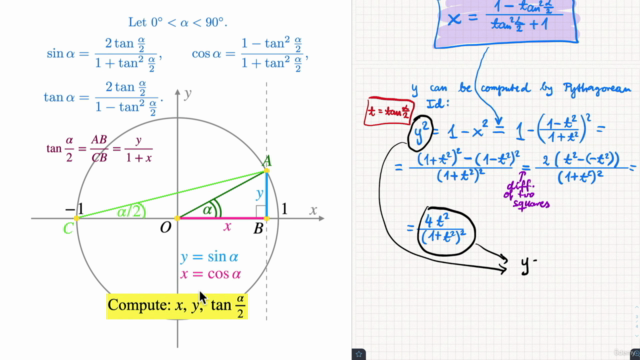Precalculus 3: Trigonometry
The Algebra 2 topic of trigonometry, preparing for studies of Calculus; contains a crash course in Euclidean geometry
4.96 (133 reviews)

2,602
students
52 hours
content
Apr 2025
last update
$69.99
regular price
What you will learn
How to solve problems in trigonometry (illustrated with 215 solved problems), in both geometrical and functional contexts, and why these methods work.
You get a crash course in Euclidean geometry: angles, triangles, polygons, similar triangles (proportions), inscribed and circumscribed circles, bisectors, etc.
Number pi: its definition as the ratio of the perimeter to the diameter of a disk, relation to the area of a disk, some geometrical approximations.
The geometric definitions (by ratios in right triangles) of three trigonometric functions (sin, cos, tan) and their reciprocals (secant, cosecant, cotangent).
Exact values of trigonometric functions for angles of 15, 18, 30, 36, 45, 60, 72, 75, and 22.5 degrees: geometric derivations, and with help of formulas.
Solving triangles (finding side lengths and measures of all angles, knowing some of them), both right and oblique, with help of trigonometry.
Degree vs radian: how to use proportions for recalculating degrees to radians and back; reference angles.
The functional definition of sine, cosine and tangent, with help of unit circle and circular movement; properties of these functions.
The definition of trigonometric (circular) functions (sin, cos, tan) for *any* real number using the unit circle in the coordinate system.
Reference Angles Theorem with proof (by geometrical illustration) and applications; supplementary identities and the complementary angle properties.
Periodic functions. Sinusoids: period, amplitude, phase shift, vertical shift. Transformations of graphs of trigonometric functions.
Pythagorean theorem and Pythagorean triples. Law of Cosines, Law of Sines: formulation, proofs, and applications in problem solving.
Various trigonometric identities with proofs, geometrical illustrations, and applications for problem solving.
The Pythagorean Identities; Reciprocal Identities; Quotient Identities; Even/odd identities.
Sum and Difference Identities for sine and cosine with proofs, geometrical illustrations, and applications.
Sum To Product and Product To Sum Formulas for sine and cosine, with derivations and applications.
Double (Half) Angles Identities with geometrical illustrations, proofs, and applications in problem solving.
Inverse functions to sine, cosine and tangent, their definitions, properties and graphs.
Compositions of trigonometric functions with inverse trigonometric functions; identities involving inverse trigonometric functions.
Complex numbers and their trigonometric (polar) form; consequences of the Sum Identities for sin and cos for multiplication of complex numbers in polar form.
De Moivre's formula (positive natural powers of complex numbers) and its application to quick recreation of formulas for sine and cosine of multiples of angles.
Trigonometric equations: various types and corresponding methods for solutions; depicting the solution sets on the graphs and on the unit circle.
You get a sneak peek into trigonometry in a future Calculus class (how some trigonometric formulas are used there).
You get a plethora of geometric illustrations, supporting your intuition and understanding of trigonometry.
Screenshots




Related Topics
4836560
udemy ID
8/17/2022
course created date
11/18/2022
course indexed date
Bot
course submited by